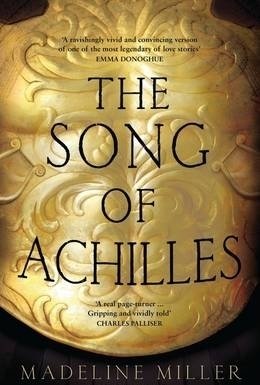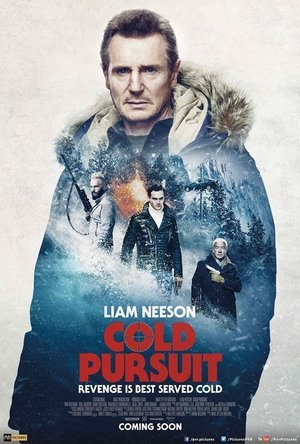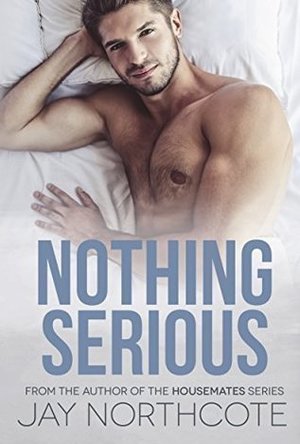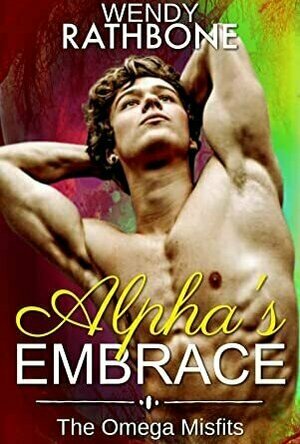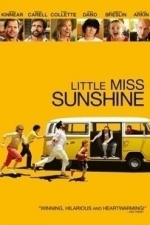Ivana A. | Diary of Difference (1171 KP) rated The Song of Achilles in Books
Aug 21, 2018
<img src="https://gipostcards.files.wordpress.com/2018/07/book-review1.png"/>;
The Song Of Achilles became a part of my TBR list right after I finished reading Circe. I loved Circe and it is one of my favorite books of 2018. I also enjoyed The Song of Achilles, but not nearly as much.
For the ones out there who love greek mythology, this is a book that covers Achilles’s life told from Patroclus’s point of view. It is more or less accurate, and covers a lot of details from the early lives of these two princes. This is a story about one great friendship that turns into something more, a lot of challenges, a lot of doubts, and a lot of choices to be made during a time of war.
The story is very fast paced, and I was skipping through the pages as fast as Achilles was killing Trojan warriors. From their childhood, to their growing up, to their adventures and the war, this book will never keep you calm, because every chapter something unexpected happens. Well, sometimes not too much, as I know the story, but even still, I was surprised a lot.
<img src="https://gipostcards.files.wordpress.com/2018/07/book-cover.png"/>;
<b><i>A thing that bothered me a lot throughout the whole book was the inaccuracy at some points, and hiding information. </i></B>
Now, we all know that Achilles was immortal. And we all know the story that his mother Thetis, a goddess of water dipped his body into the water in the river Styx. However, she was holding him by the heel, so his heel was the only place where he was vulnerable. This will be the reason of his death, when Apollo would direct Paris’s spear into Achilles’ heel.
Now - if this is such a common fact, and everybody who heard about Achilles knows it - why wouldn’t the author include it in the book. <b>It wasn’t mentioned once.. Not once… I found this really upsetting. </b>
Moving forward to the characters, we have Patroclus presented as the weaker one, the coward, the person that is mocked by everyone, not loved even by his parents and unworthy. ( Another point that bothered me is that this is not entirely true - according to Homer, Patroclus was apparently wiser than Achilles)
On the other hand, we have the opposite - a wise, brave, strong and handsome man, loved by everyone, immortal and a son of a goddess. We have a perfect example for a leader.
While fate connect these two to meet from their very early years, they also build a love relationship which they try to hide it at first. This relationship will cause them hatred from Thetis (Achilles’ mom) and will prompt them to make choices that might not be necessarily good ones. Now, Homer never mentioned a pederasty in his works between these two, but Miller does. And I am not sure how I feel about it. Not about the fact that they are gay, but the fact that this is Achilles.
All in all, I enjoyed this book. It is a great retelling of the story and a great time capture of the past. It wasn’t anything special, and I didn’t feel heartbroken in the end, but it was definitely worth reading it. I give it three stars - ★★★.
Emma @ The Movies (1786 KP) rated Cold Pursuit (2019) in Movies
Jun 22, 2019 (Updated Sep 25, 2019)
From its opening with an Oscar Wilde quote and music that sounds like a mix of the 80s and Sherlock Holmes I was intrigued. I knew I wasn't expecting a masterpiece but I had hoped for something entertaining at the very least.
One thing that I was quickly baffled by was the between scene captions, a terrible font pops up with the relevant information and then it blows away as if made by snow... but not every time. I did wonder if even the graphics people got bored of doing it.
SOP for me and new movie releases is that I make 2 A5 sides of notes, for Cold Pursuit I made 7... SEVEN... and the general consensus of most of them was "WTF", "ridiculous" and "why?!" In fact those were probably the most used words on all the pages.
The characters are all over the place. Viking's relationship with his son, the token gay relationship that felt like it had just been wedged in and White Bull's gang dubious frolicking... I just don't even know what to say about it.
I can't sit here and list all the bizarre things, neither of us have the time for that so let's skip to the things I enjoyed. There are just three things, much quicker than covering the other stuff!
Wingman's wife was a star for me, and that nail sharpening technique was inspired... totally stealing that.
One of the scenes has Coxman chasing his next target with his snowplow. He comes up on him quite menacingly and then the film did a great job of fooling me, I was expecting one thing and given another. That part of the scene came together quite well, it's just a shame about what followed.
Viking's son was surprisingly wise in almost all of his scenes, very laid back, just going with the flow. Out of all of it though I loved the scene about fantasy football when he's talking with Mustang. It was was a nice little addition.
That's it, I'm done with the things I liked.
The cinema was "full" when I saw it. There were 30-40 people, which for our cinema and this type of film on opening night in a small screen, wasn't bad at all. There were old and young, there were people who snored and people who laughed, I fell into neither of those last categories. Honestly I was in too much shock to do anything other than pick my jaw up off the floor.
Ultimately Cold Pursuit is another prime example of why you shouldn't put some of your best scenes in the trailers. The whole thing could probably have been sold on lesser scenes in the trailer and then the impact of the bigger ones would have potentially given it a few more stars.
What you should do
I can't in good conscience recommend this to anyone, Neeson has performed much better acts of revenge in many of his other films... just watch one of those... perhaps from behind a snow globe to make it seem like you're watching Cold Pursuit.
Movie thing you wish you could take home
Please could I have Coxman's ability to get into places where he clearly doesn't meet the dress code.
Debbiereadsbook (1590 KP) rated Nothing Serious in Books
Jul 15, 2019
Mark finally admits to himself and his partner of 9 years, that he is gay. While Rachel is devastated, she knows things have not been right between them for a long time. Mark moving out of their home seems the best thing to do, but they will remain friends. On moving day, Jamie shows up with his brother, and Mark feels an immediate attraction to the younger man. When Jamie drops a box contains some. . .personal items, Mark is mortified but Jamie finds the blush on Mark’s face adorable, and all kinds of sexy. But neither man is looking for anything serious right now, so they can just help each other out, right?
This book, right here, landed in my queue just when I needed it to, cos its far too stinking cute for its own good!
It’s a wonderfully well written tale of a newly out of the closet man, finding himself and all about his sexuality, with a willing young man who wants to help. Jamie finds Mark attractive, but he doesn’t want anything serious, last time he ran away when *serious* was talked about, so helping Mark explore all the joys of sex with a man, seems a good way to get close to Mark, while keeping his distance.
Mark has an immediate attraction to Jamie, and when Jamie suggests a friends with benefits type arrangement, Mark is keen to get to know Jamie.
What neither man expected, or wanted, was their emotions to get involved, and when they both realise this is what was happening, Mark and Jamie struggle with ways to talk to each other about it!
It’s not overly explicit, but it is all kinds of sexy! There is no real drama, save the guys finally admitting to themselves, at least, what they feel for each other.
It really is one of those books you just fall into and lose a few hours. It’s only short, some 154 pages, but it packs a hefty punch of cuteness! I listened to this, it’s just over 4 hours.
Michael Pauley narrates.
I have, in the past, found Pauley a bit hit and miss, for me, personally. Here, however, he really nails it!
Pauley’s voices for Mark and Jamie are different enough to be easily identifiable when they are talking, for all the characters, actually. His reading voice is clear and even, and I had no trouble keeping up. There were no dips in the sound to put me off, which has happened with Pauley before. It’s just where he lowers his voice, for thinking or musing, really but here, there is no dipping.
I loved how Pauley gets all the things running around in Mark and Jamie’s heads across, you genuinely sort of fall in love with them, as they fall in love with each other!
I’ve shelved it on my *kinda creeps up on ya* shelf, simply because, that’s what happens!
Love creeps up on Mark and Jamie and it was a pleasure listening to that happen.
4 stars for the book
5 stars for the narration
4.5 stars overall.
**same worded review will appear elsewhere**
Gareth von Kallenbach (980 KP) rated Scott Pilgrim vs. the World (2010) in Movies
Aug 8, 2019
Things change for Scott when he meets a girl named Ramona (Mary Elizabeth Winstead), at a party. Ramona shows no interest in Scott but he’s inexplicably drawn to her and eventually gets the roller blading delivery girl to go out with him, despite the strong protests of his sister Stacey (Anna Kendrick), and his drummer/ex-girlfriend Kim (Allison Pine). The upswing Scott’s life takes at meeting the girl of his dreams and his band’s shot at a recording deal is tempered by the complications of choosing between Knives, who is becoming more clingy, and Ramona, who brings with her a lot of angry baggage.
This baggage actually comes in the form of seven evil exes whom Scott must battle and defeat if he wishes to continue dating her. Scott accepts the challenge and finds himself in a life and death battle with some true psychos, all of whom have strange powers and appear out of nowhere to pummel Scott. I will not spoil the surprises but suffice it to say that the exes are played by some great names, and each one brings plenty of humor to go with the action.
Action and music blend well with comedy and romance and the video game-inspired fight sequences complete with numerous inside jokes for gamers are truly a delight. The frantic sequences mix music, and over the top action with cartoonish gags and humor in a winning formula. Seeing Scott take flying leaps across a room to battle for Ramona and rebounding from one pummeling after another is great fun. Scott give as good as he gets, learning at times that brains will win out over brawn.
The film has a frantic pacing that Director Edgar Wright never lets get out of control. Like his great work in Shaun of the Dead, Wright keeps the characters and their relationships at the center of the film, making them not only relatable but easy to root for despite the bizarre scenario the characters find themselves in.
The film is based on a graphic novel by Bryan Lee O’Malley and delivers a fun adventure that should delight fans of the novel as well as video gamers everywhere. The film knows who its audience is and plays the zany plot with a wink and smile and does not get caught up with intricate plotlines and overly complex characters. Instead the movie keeps the attention on the action and the great cast of characters. Cera does his best work yet in the title role and Culkin nearly steals every scene he is in as does Wong. Jason Schwartzman shines as the uber villain Gideon and rounds out the effective cast in this pleasant surprise of the summer.
Debbiereadsbook (1590 KP) rated Alpha's Embrace (Omega Misfits #3) in Books
Apr 19, 2020
This is book 3 in the Omega Misfits series, but you don't need to have read Trust No Alpha (book 1) or The Alpha's Fake Mate (book 2) before you read this one. They all take place in the same world, but can totally be read as a stand alone read. I HAVE read them, although I did not write reviews for them as I read them via the Unlimited programme.
And I found THIS one the weakest of the three.
Alphas are supposed to mate with Omegas and ONLY with Omegas. However when 2 Omegas mate, and produce a child, that child is a Sylph. Sylph children are removed from society and kept locked up for their own good. They live with a constant Burn, unlike Alphas who get them regularly, and most do not live into adulthood for going insane.
Misha is such a child. Well, not a child, he is well into adulthood and a bit of an anomoly. He can control his Burn, and be a productive member of society, BUT for the fact he is Sylph. Geo is an Alpha and the new general manager at the facility where Misha lives. When Geo touches Misha without gloves, a bond begins. A bond that is as illegal as it is dangerous. To BOTH of them.
Both Misha and Geo know this is different, whatever they are feeling, but Geo is best able to voice it and rationalise what is happening between them. Misha is, for want of a better explanation, away with the fairies most of the time, but then again, being locked up all the time would make anyone so. Misha KNOWS he is Sylph, he KNOWS he cannot bond, so he doesn't know what this is between him and Geo. He KNOWS he wants Geo, in a way that is different to his usual want (Sylphs want everyone) he just doesn't know what to do. Geo makes the decision, but Misha is given a choice. I liked that it took time for them to act on the bond, to consummate it. They both have thoughts about the other, it just takes time for them to act on it. I've filed it as m-preg, cos it is talked about and does appear in other books in the series, but there isn't any here.
Both guys have a say, in the first person. Misha's voice is a little airy-fairy, like I said and Geo's is very much an Alpha, but he does go a little off the rails, and that comes out of nowhere, to be honest. I found Geo the least liked of the three Alphas in these books and I cannot pinpoint exactly why.
I liked how it all sorted out, but I would have liked a bit of an epilogue, a some-time-later type thing, to catch up on them, and how things pan out after what they did, and whether things had changed for Misha with a fully formed bond.
A nice read, a GOOD addition to the series though and I think it really was needed, a story about the Slyph children, who are talked about in the other books. This book just didn't push my buttons as the other two did, I'm afraid.
3 good solid stars
**same worded review will appear elsewhere**

Wealth & Abundance Meditation with Peggy McColl
Lifestyle and Education
App
Have you tried and tried get that "Law of Attraction" thing to work for you but all you've managed...

Dating DNA Plus
Dating, Entertainment and Social Networking
App
Dating DNA is the #1 dating app in the iTunes store with 100% FREE SERVICE. NO Monthly Fees! NO...
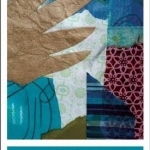
Haiti Glass
Book
Winner of the 2015 PEN Oakland Josephine Miles Literary Award In her debut collection of verse and...
Sarah (7800 KP) rated Little Miss Sunshine (2006) in Movies
Mar 24, 2021
Little Miss Sunshine is a quirky gem of an indie film from 2006 that whilst a favourite of mine and Oscar nominated, has likely flown below the radar for many mainstream viewers. Which is a huge shame as this is such a fun, heartwarming and enjoyable film
Directed by husband and wife team Jonathan Dayton and Valerie Faris, Little Miss Sunshine follows the life of the dysfunctional Hoover family from New Mexico. The Hoovers are a family of unfortunates, misfits and losers, and probably one of the most realistic family depictions you’ll ever seen on screen outside of reality TV. There’s Sheryl (Toni Collette), the harassed mum who keeps her family fed on fast food. Dad Richard (Greg Kinnear) who’s trying to peddle a failing business that focuses on teaching others the secrets to success. Grandpa Edwin (Alan Arkin), an ageing hippie with a drug habit that has been kicked out of his retirement home. Sheryl’s brother Frank (Steve Carell), a gay man currently recovering from a suicide attempt after his partner left him. Son Duane (Paul Dano) who’s goal to get into flight school has led him to take a vow of silence. And finally there’s young daughter Olive (Abigail Breslin), who’s obsession with beauty pageants leads the family to take a cross country trip in an ageing VW van to help her compete in the Little Miss Sunshine pageant. Along the way, the family encounter a variety of mishaps and events that can potentially change their lives.
The Hoover family for the most part are ridiculously lovable and this is entirely down to their flaws that they are so likeable. Aside from Dad Richard who has a number of questionable ethics and morals that demean others, the family and their unique quirky personalities are the main reason why this film is so enjoyable. And the fact that the entire family are all brought together by young Olive across the span of the film makes this incredibly heartwarming. Olive is an underdog and being realistic, not the type of girl who you’d see in your typical American beauty pageant, but you still find yourself rooting for her all the same.
The cast are fantastic and while you can always rely on Toni Collette, Alan Arkin and Greg Kinnear, it’s Steve Carell and Abigail Breslin that shine brightest. Until this, I didn’t think Steve Carell could do serious and especially not a role that like. But he excels, bringing a sad, intelligent air to Frank and personally I think this is his best role to date. And then there’s Abigail Breslin, a 9 year old who steals the show and pulls the entire cast and film together. Together with a clever, well written script, the cast pull together a heartwarming and surprisingly funny film where emotions and family are key to an eventful road trip.
What I enjoyed the most about Little Miss Sunshine is that while the journey the family take is obviously most important, we do at least get the joy of seeing Olive enter the beauty pageant and this is such a fitting end to the story. There may be some slightly unbelievable or predictable events that occur across the journey (the police traffic stop being one), but ultimately you come out of this feeling incredibly satisfied and rather warm and fuzzy inside. One of the most enjoyable family road trip movies I’ve ever seen.

TalkTV – Live Stream Mọi Lúc
Social Networking and Entertainment
App
Cài đặt TalkTv ngay để thể hiện tài năng của bạn cùng các Hot Idol và Game Thủ...
